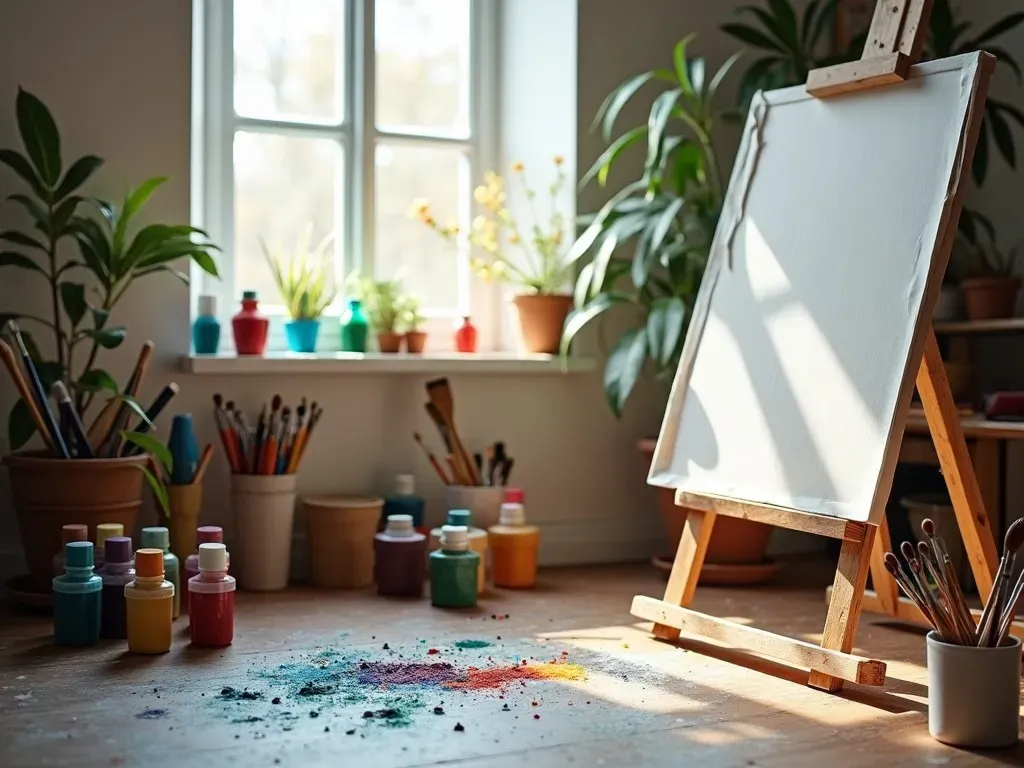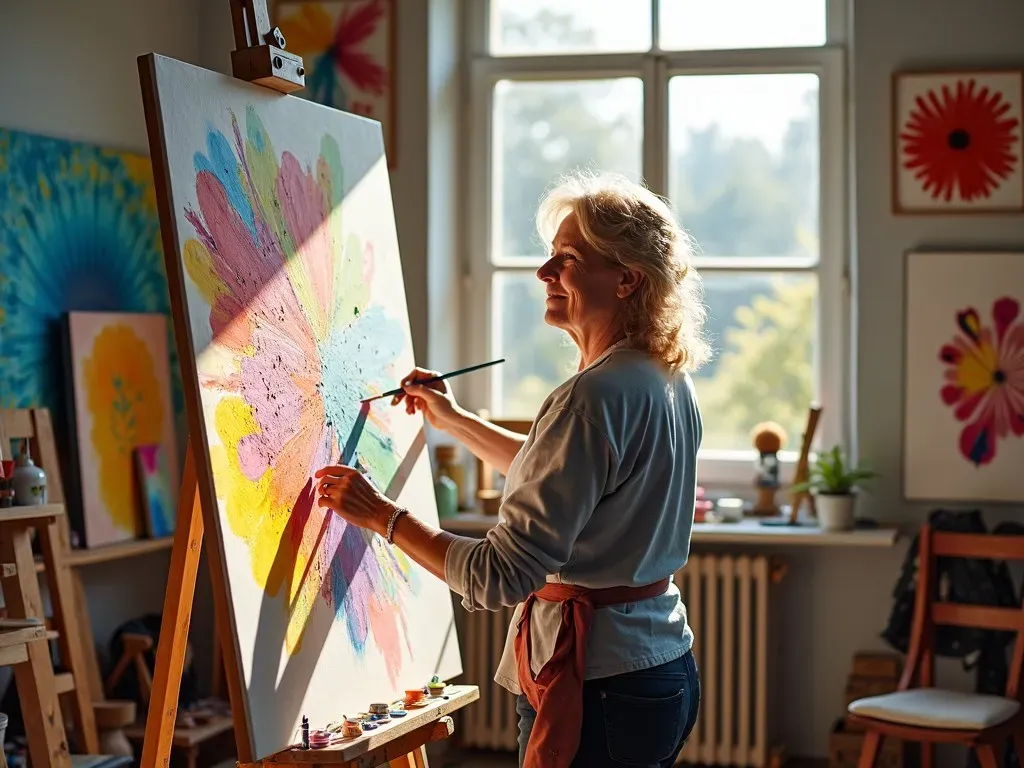Keyword: painting on canvas
Painting on canvas is a timeless art form that allows artists of all levels, whether novice or professional, to express their creativity in captivating ways. Whether using oils, acrylics, or mixed media, exploring the canvas offers numerous opportunities for innovation and personal expression. This guide dives deeply into the world of canvas painting, unpacking essential Techniques, tips, and resources that every artist should know.
Why Choose Canvas for Your Painting?
Advantages of Canvas Painting
-
Durability: Canvas is a strong material that can withstand the test of time compared to paper. When properly primed and cared for, paintings on canvas can last for decades or even centuries.
-
Versatility: Canvas can be used with various paint types including oil, acrylic, and watercolor, making it a favorite among artists. This flexibility allows for a wide range of techniques and styles.
-
Texture: The texture of canvas creates unique effects that can enhance the overall aesthetic of a painting. It allows for varied brush strokes and layering techniques, adding depth to your work.
-
Availability: Available in various weights and textures, canvas can be found in art supply stores as pre-stretched canvases, canvas boards, or in rolls for custom sizing.
| Feature | Benefits |
|---|---|
| Durability | Long-lasting and resilient |
| Versatility | Suitable for various techniques |
| Texture | Adds depth and character |
| Availability | Easy to find and purchase |
Essential Supplies for Canvas Painting
To get started with painting on canvas, you’ll need a few essential materials:
1. Canvas
Choose between pre-stretched canvases or canvas boards based on your project requirements. Pre-stretched canvases are ready to use, while canvas boards offer more portability.
2. Paint
- Oil Paint: Known for its richness and blending capabilities, oil paint is a popular choice but requires longer drying times.
- Acrylic Paint: Fast-drying and versatile, acrylic paint is great for beginners who want quick results and vibrant colors.
- Watercolor: Traditional watercolor techniques can also be applied to specially prepared canvases.
3. Brushes
Invest in a variety of brush sizes and shapes (flat, round, filbert) for different techniques and effects. Natural bristle brushes are excellent for oil paint, while synthetic brushes work well with acrylics.
4. Palette
A palette is essential for mixing colors. You can use a traditional wooden palette or disposable palette paper for convenience.
5. Easel
An easel allows you to work more comfortably, providing the right angle and height for your canvas. Consider whether you want a tabletop easel or a standalone one.
6. Mediums
Depending on the paint, you might need mediums for thinning or adding gloss. For oil paints, linseed oil is commonly used, while acrylics can use water or acrylic mediums.
Reference Video
Preparing Your Canvas
Before diving into your artwork, preparation is critical. Here’s a concise look at the setup process:
Step-by-Step Preparation
-
Select Your Canvas: Choose the size and type that suits your project.
-
Priming: A primed canvas (usually gessoed) creates a surface that helps paint adhere better and prevents absorption into the canvas fibers.
-
Securing the Canvas: For larger canvases, consider stretching it over a wooden frame or securing it with staples.
Tips for Priming
- Apply a thin layer of gesso with a wide brush and let it dry completely.
- Sand the surface lightly for a smoother finish before applying a second coat.
- Repeat the process for a multi-layered priming effect if desired.

Techniques for Painting on Canvas
Once your canvas is prepped, the next stage is exploring different painting techniques:
1. Underpainting
Underpainting is a technique that can help establish values and composition before adding color. Use a monochromatic paint to create depth and structure.
2. Glazing
Using diluted paint to create translucent layers allows you to build depth and complexity gradually. Clear mediums can be mixed with paint to facilitate this process.
3. Impasto
Applying thick layers of paint creates a textured surface that catches light in unique ways. This technique adds three-dimensionality to your work.
4. Scumbling
Scumbling involves applying a thin, opaque layer of paint over a dry base layer, allowing previous colors to show through for a rich, textured effect.
| Technique | Description |
|---|---|
| Underpainting | Establishes values and structure |
| Glazing | Builds depth using transparent layers |
| Impasto | Thick paint application for texture |
| Scumbling | Thin layer applied over dry paint for a textured look |
Inspiration for Your Canvas Artwork
When starting with painting on canvas, Inspiration is crucial. Here are a few tips:
- Explore Other Artists’ Works: Visit galleries, online platforms like Pinterest and Instagram to see what styles resonate with you.
- Nature and Surroundings: Capture the beauty of the world around you. Landscapes, sunsets, and even still life can spark ideas.
- Art Challenges: Participate in art challenges or prompt boxes that encourage creativity and experimentation.
Popular Canvas Painting Ideas
| Thing to Paint | Idea |
|---|---|
| Landscape | Majestic mountains at sunset |
| Portrait | A friend or a beloved pet |
| Abstract | Colorful shapes and forms |
| Still Life | A bowl of fruits with textured backgrounds |
Frequently Asked Questions (FAQ)
Q1: What type of canvas should I choose for beginner painting?
A1: Beginners often find pre-stretched cotton canvas ideal, as they are easier to work with and readily available.
Q2: How do I protect my canvas painting after completion?
A2: Once your painting is dry, consider applying a clear varnish to protect it from dust, moisture, and UV rays.
Q3: What should I do if I make a mistake on my canvas?
A3: One solution is to let the paint dry and then paint over it. Alternatively, you can use a wet cloth or sponge to remove wet acrylic paint.
For more detailed useful information about painting techniques, visit Painting to Gogh.
Q4: Can I paint on unprimed canvas?
A4: While it’s possible, priming your canvas ensures the paint adheres better and can prevent it from soaking into the fabric.

Q5: What makes oil painting different from acrylic painting on canvas?
A5: Oil paints take longer to dry, allowing for more blending and layering opportunities, while acrylics dry quickly, making them versatile for various techniques.
This guide provides an overview of the essentials you need to start painting on canvas. By exploring various techniques, materials, and inspiration, any budding artist can confidently create stunning pieces of artwork. Dive into the world of canvas painting and let your creativity shine!
